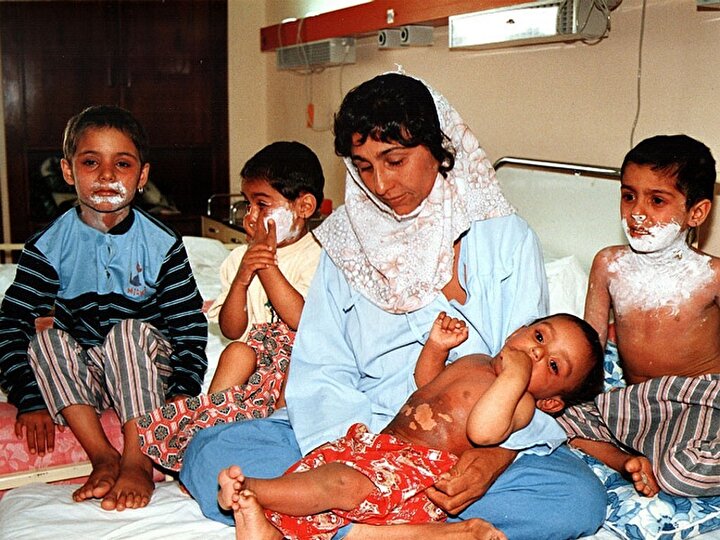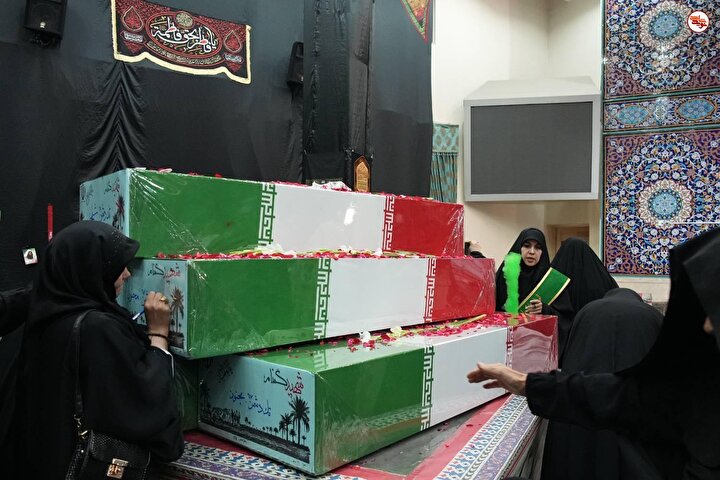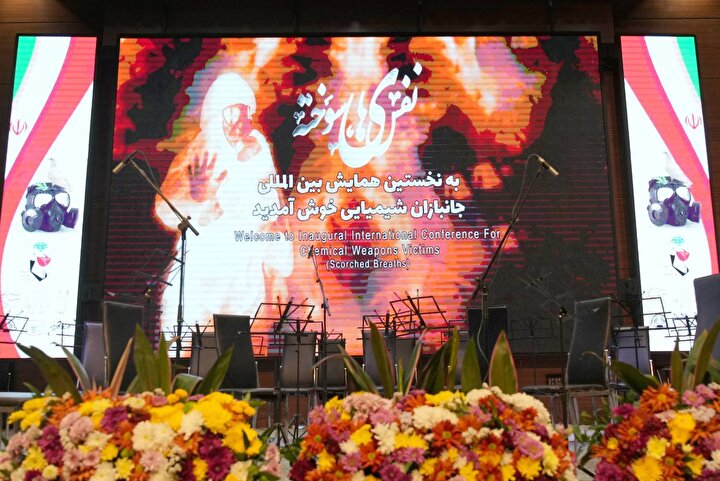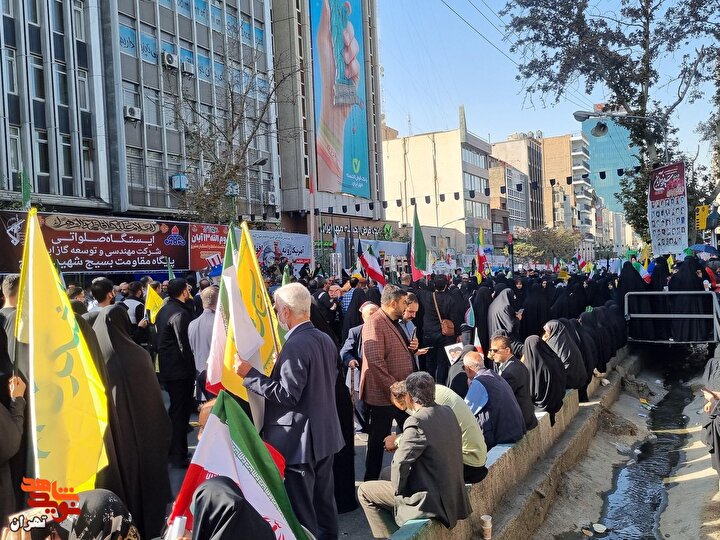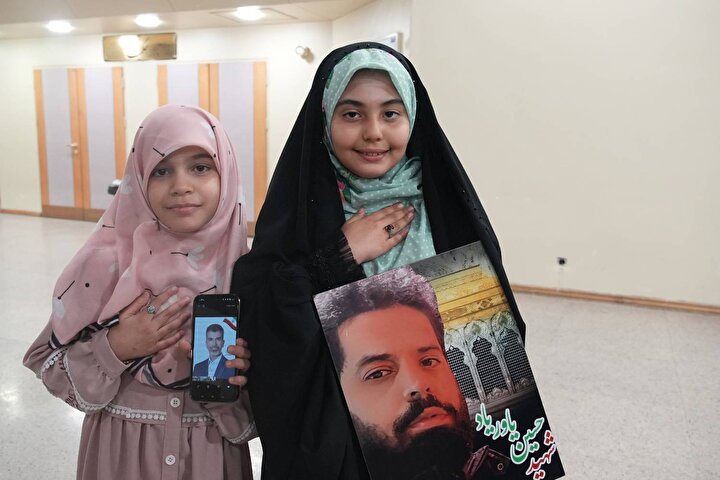
The Formation of the Islamic Government and Its Outcome

The Formation of the Islamic Government and Its Outcome

The victory of the Islamic Revolution in Iran, and the fulfilment of Imam Khomeini’s promises, was not an event confined purely to the domestic realm for a change in the political regime. Rather, just as many of the American, Israeli and European governmental officials noted in their memoirs of that time, the Islamic Revolution was like a destructive earthquake for the Western world. So it was that from the dawn of the morning of February 11, 1979 (Bahman 22, 1357 AHS), animosity towards the newly-established Islamic system began on a large scale from all directions.
The enemy front was led by America, while the British government and some of the other European governments, along with all the Western-dependent regimes, were active partners. The former Soviet Union and its satellites were also dissatisfied with the establishment of a religious government in Iran, and in many of the hostilities it sided with the Americans and helped them.
With the mobilization of the Iranian people for the reconstruction of the country, Imam Khomeini sought to present a model of a sound, advanced religious society to the rest of the world. For this reason, with the formation of an organization named the ‘Reconstruction Crusade’ (Jihad-e Sazandegi) he paved the way for the presence of thousands of experts and revolutionary forces in the villages and other deprived areas of the country, and in a short period of time, work began on the construction of roads, health centers and clinics and the supply of water and electricity on a wide scale.
Less than two months after the victory of the revolution, the Iranian people, in one of the freest elections ever held in the history of Iran, approved the establishment of an Islamic republic system by an overwhelming 98.2% of the votes. Following this, elections were held for the codification and approval of constitutional laws and the election of representatives for the Islamic Consultative Assembly.
It was under these circumstances that the waves of sedition and foreign pressures swelled. By using its fifth columnists, America sought to embroil the Islamic system in domestic problems and, by fanning the flames of dissent, pave the way for its demise. Amongst the first weapons used by the enemies of the revolution in their attempts to weaken the Islamic republic system was the assassination of prominent revolutionary figures. In a short period of time, such well-known personalities as the scholar Mortaza Motahari (a member of the Council of Revolution), Dr. Mohammad Mofateh, General Qarani (the Army Chief of Staff), Hajj Mahdi Araqi and Ayatollah Tabatabai were assassinated.
America not only gave a negative reply to the legitimate request of the Iranian nation for the Shah’s return to Iran and the restitution of Iranian monies and assets in that country--which amounted to twenty-two billion dollars --but they also placed extensive facilities at the disposal of the supporters of the former Shah’s regime who had fled the country so that they could organize themselves into opposition groups abroad. The anger of the Iranian nation at the open hostilities of America led to the occupation of the American Embassy in Tehran by a number of Iranian Muslim students. After defeating the resistance put up by the armed American guards there, the students arrested the American spies.
Imam Khomeini expressed his support for the students’ revolutionary move, and described the take-over as a greater revolution than the first. The documents obtained from the embassy were gradually published in a series of more than seventy volumes entitled Documents from the American Espionage Den in Iran. These unassailable documents drew back the curtain on the secrets of American espionage activities in Iran and the numerous instances of American interference in the internal affairs of Iran and other countries of the world. They also revealed the names of many of the American agents, middlemen and spies, as well as the kinds of spying techniques employed and political incitements offered by this country in various regions of the world.
The occupation of the American Embassy, which in the lexicon of the Islamic Revolution has become known as the ‘espionage den’, was a great humiliation for the governing body of that country. The most important achievements derived from this act, in addition to guaranteeing the continuation of the Islamic Revolution, were that it shattered the Pharaonic awesomeness which surrounded America and it gave hope to the nations of the third world as to the possibility of standing up to the big powers.

The defeat of the plans for the subversion of the Islamic republic system, through the use of an economic and political blockade which was pursued by America, and this country’s defeat in the Tabas desert operations which followed the occupation of the American espionage den, along with its failure to divide the country using the anti-revolutionary groups, set the American government thinking of a military solution. Consequently, on September 22, 1980 (Shahrivar 31, 1359 AHS), with American planning and the support of powerful countries, the Iraqi army began an extensive military assault along the 1,280 km common border with Iran, and at 2 o’clock in the afternoon of the same day, Iraqi fighter planes bombed Tehran airport and other areas.
Broadcast of the news of the start of Iraq’s war against Iran, for all its importance, was accompanied by the deathly silence of all the international associations and all the powers worthy of mention in the world. Imam Khomeini’s initial reactions and his first messages and speeches on the aggression of the Iraqi army, as regards his understanding and the kind of command he offered, are very interesting. However, their subtleties and special qualities are beyond the scope of this work. Be that as it may, his first reaction was to issue the command to resist, and in his first analysis given in a speech, he described America as the main agent behind the war as well as being Saddam’s (the Iraqi president’s) supporter and an instigator of the attack on Iran. He assured the people in no uncertain terms that if they rose up for God in defense of their land against the enemy’s aggression and to carry out their religious duty, the enemy would most definitely be defeated, even though at that time everything seemed to point to the opposite.
The day after the Iraqi’s first assault, Imam Khomeini, in a message to the Iranian nation, delineated the main lines to be adopted in administering war affairs and those of the country during wartime in seven short but very precise and comprehensive sections. Following this, in a number of messages to the Iraqi people and army, he issued an ultimatum, and from then on, the supervision and guidance of the difficult issue of the nation’s eight-year-long defense of her lands began under an unparalleled management.
Imam"s command for the mobilization of the people and the formation of a 20-million-strong army was welcomed by the revolutionary youth of Iran. Training began, volunteer forces were sent to the war fronts, and an air of spirituality suffused Iran. The successes of the soldiers of Iran’s army came one after the other, and the signs of defeat became apparent on the enemy’s front.
Eventually, the faces of America and her European allies began to appear from behind the war curtain. Different kinds of advanced weapons, the procurement of which, even in peacetime, was difficult and required years of constant effort, negotiations and concession giving, were placed at Saddam’s disposal in no time at all. The extensive bombing of towns, cities, villages and economic centers, and the firing of destructive long-range missiles on residential areas resulting in the deaths of hundreds of women and children, were crimes which took place before the very eyes of the organizations claiming to defend human rights.
The multifarious help given Saddam in determining conditions on the war fronts, which were quickly turning in favor of the army of Islam, did not alter anything. As the bombing of residential areas and the missile attacks were intensified, America had no choice but to interfere directly. Battleships from France, Britain, America and the former Soviet Union entered the waters of the Persian Gulf. America saw the only remaining solution to lie in the internationalization of the war crisis and the direct involvement of other countries. Thus, the war known as the tanker war began.
The mission of the forces deployed in this war was to prevent the export of Iranian oil, to stop and inspect merchant ships, and to hinder the entry of basic goods into the Islamic Republic. In the course of this action, many Iranian merchant ships and oil tankers were subjected to missile and bomb attacks by American planes, and the oil wells belonging to Iran in the coastal waters of the Persian Gulf were set alight by American forces. In its final aggressive act against Iran, in July 1988 (Tir 1367 AHS), America perpetrated a shocking crime when one of its aircraft carriers shot down an Iranian passenger plane flying over the Persian Gulf killing all the 290 men, women and children on board.
Another bitter event of this period was the massacre of Iranian pilgrims of the sacred House of God in Mecca by agents of the Saudi regime. On Friday August 2, 1987 (Zol-Hajjah 6, 1407 AS / Mordad 11, 1366 AHS), when 150,000 pilgrims had taken to the streets of Mecca to participate in the Deliverance from Pagans ceremonies, secret agents of the Saudi government along with the Saudi police placed obstacles across the main route of the demonstrators, and with prior readiness, they suddenly attacked them using different kinds of weapons. In this tragic event, approximately 400 pilgrims from Iran, Lebanon, Palestine, Pakistan, Iraq and other countries were martyred, and around 5,000 people were injured, while a number of other innocent people were arrested. The majority of those martyred and injured were women and old people who could not escape the danger quickly enough.
The deployment of Western troops to the Persian Gulf, along with events which took place in the final months of the eight-year war, occurred because the army of Islam was in a much better position, had pushed the enemy back across the border in most of the occupied territories and was continuing its advance to uproot the fundamental cause of calamity in the region. Saddam’s downfall at the hands of the army of Islam would sound the drum of defeat for the world powers in their confrontation with the Islamic republic, for contrary to the situation in the past, all the efforts of America and the Security Council were now turned to stopping the advance of the Iranian combatants and preventing Saddam’s downfall.

The Iranian Government accepted Security Council resolution 598 containing most of Iran’s conditions for an end to the hostilities. Imam Khomeini’s message, which became famous as the message announcing acceptance of the resolution (July 20, 1988 / Tir 29, 1367 AHS), is one of the masterpieces of his leadership in which a report of the imposed war and its dimensions was once again presented in clear terms. The future policies of the Islamic system and revolution in all areas including confrontation with the superpowers and remaining steadfast in the aims and aspirations of the revolution were also described therein.
In this way, the eight-year war came to an end. None of the aims behind its imposition had been achieved, and the honorable nation of Iran, under the prudent guidance of Imam, once again proved their rightfulness and deprived the enemy of their wish to divide and conquer Islamic Iran. In addition to the loss of vast human and economic resources which the two countries sustained in the war, the greatest crime and act of treachery which Saddam was responsible for, indeed one for which all the Arab, so-called ?Islamic? governments who encouraged and helped him in his attack must also bear responsibility, is that with the imposition of this unwanted war, they delayed the uniting of the Islamic umma and the global Islamic Revolution--conditions for which were ripe from every aspect after the fall of the Shah-- for many long years.
After the implementation of a partial peace, Imam Khomeini, in a speech delivered on October 3, 1988 (Mehr 11, 1367 AHS), addressed the officials of the Islamic Republic and delineated the policies for the reconstruction of the country in nine sections. A careful study of these instructions is sufficient to obtain a deep understanding of Imam’s foresight while at the same time they show that Islamic values were his top priority.
Among the important acts of Imam Khomeini carried out in the last months of his life, and one worthy of reflection, is the dispatch of a letter to Mr. Gorbachev, the last head of the Union of Soviet Socialist Republics. In this letter, sent on January 1, 1989 (Dey 11, 1367 AHS), while analyzing the changes in Russia, he pointed out the inability of the atheist system of communism to manage the affairs of society and declared Russia’s main problem to lie in its leaders? lack of belief in God. In so doing, he also warned the Russian leadership against turning to the Western capitalist system and of being deceived by America. By propounding deep philosophical and gnostic matters and pointing out the failure of the communists in their anti-religion policies, Imam Khomeini in his letter asked Mr. Gorbachev to turn to God and religion instead of pinning hopes on the materialism of the West.
One of the important and at the same time most odious of actions taken in these months was the publication and distribution of the book ‘The Satanic Verses’ by publishers in Western countries. The support officially given the writer of this book, Salman Rushdie, by the Western governments can be taken as marking the start of the West’s cultural assault on Islamic beliefs and values. The book questioned and attacked the fundaments of the Islamic faith and all that the Muslims hold sacred, their love for which has caused them to unite in their goals and has led to the recent Islamic movements. On February 14, 1989 (Bahman 25, 1367 AHS), Imam Khomeini, taking into account the existing realities and based on the Islamic doctrines which are accepted by all Muslim denominations and the formal legal opinions which are to be found in the juristical books of all the Islamic sects, issued a decree declaring Salman Rushdie an apostate and calling for his execution and that of the book’s publishers who were aware of its blasphemous contents. With the issuance of such a decree, the Muslims, regardless of denomination, language and race, stood in serried ranks against this predetermined assault. The outcomes of this incident were to make manifest the existence of the Islamic community in the shape of a single nation (umma) and to show that whenever the Muslims are guided correctly, they can, despite their internal differences, play a determining role in the world’s future as the forerunners of the movement for the revival of religious values.

In the years following the victory of the revolution, in the face of the numerous plots hatched by the enemies of Islam--led by America--aimed at putting an end to the Islamic government in Iran, and despite the imposition of an eight-year war on the Muslim nation of Iran, Imam Khomeini, through his decrees and by presenting guidelines for the formation of new institutions and organizations as well as the restructuring of the existing establishments-- the remnants of the former regime--was able to pave the way for wide reaching and valuable services for the Iranian nation. The formation of institutions such as the Reconstruction Crusade, the Relief Committee, the Khordad 15 Foundation, the Housing Foundation, the Martyrs? Foundation, the Foundation for the Deprived and the Literacy Movement, to name but a few, which rendered services to the most remote areas of Iran and to the most deprived villages, is just one of the measures taken during the lifetime of His Holiness Imam Khomeini. The formation of the Islamic Revolution Committees, the Islamic Revolution Guard Corps, and the reorganization of the army, and the role these organizations played in establishing security, defending the country against the aggression of the Ba?thist regime and neutralizing the plots of the enemies, are amongst some of the most interesting and noteworthy developments of the Islamic Revolution.
Transforming the theological schools; changing and re-evaluating parts of the school and university curricula; creating new university courses at different levels; establishing universities and centers of higher education in deprived cities; broadening the reception area of Iranian TV and radio broadcasts to include remote parts of the country, and providing said areas with communication services, are just some of the projects carried out at Imam’s insistence and which he oversaw. The formation of a ‘Cultural Revolution Council’ to supervise the planning of university courses, to compile textbooks for students and to train university lecturers, was a task undertaken in the early days after the victory of the Islamic Revolution.
After ten years of experience with the Islamic republic system in Iran, and in order to reform and complete the pillars of the Islamic system, on April 24, 1989 (Ordibehesht 4, 1368 AHS), Imam Khomeini, in a letter to the president of the time (His Eminence Ayatollah Khamenei) called for a Council of Experts to be formed charged with the responsibility of looking into the reforms needed to the constitutional law and codifying them while bearing in mind the guidelines given in the letter. This decision and others like it show how important he considered strengthening the basis of the Islamic government to be, and how he used every available opportunity to prepare the grounds and pave the way for a better implementation of Islamic laws.
